Drone RC Ecosystems
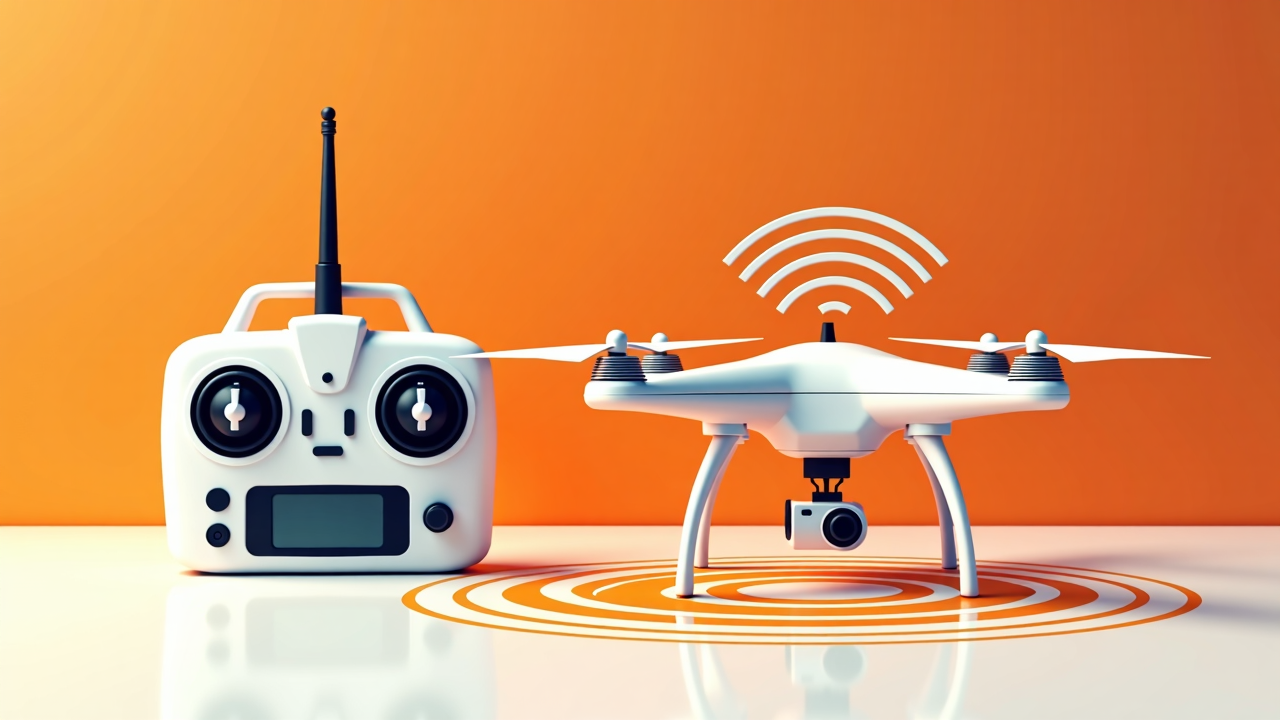
Radio control ecosystems are the hardware platforms that bring RC protocols to life in the real world. After years of testing various RC systems across different flying conditions, I've learned that choosing the right ecosystem is just as important as understanding protocols. This comprehensive guide explores the major RC system brands available today, their hardware offerings, and how to choose the right ecosystem for your specific flying needs.
Introduction to RC Ecosystems
When we talk about drone radio control systems, we often focus on the underlying protocols. However, the hardware ecosystem—the transmitters, receivers, modules, and supporting software—plays an equally crucial role in your flying experience. Each ecosystem has its own philosophy, strengths, and limitations that shape how you interact with your drone.
I still remember my first proper RC transmitter, a basic FlySky FS-i6. While it served me well as a beginner, I quickly discovered how moving to a more advanced ecosystem opened up new possibilities and improved my flying experience dramatically. The right ecosystem doesn't just control your drone—it becomes an extension of your flying style.
The Evolution of RC Ecosystems
RC system brands have evolved dramatically over the decades:
- Early Days (1970s-2000s): Traditional RC brands like Futaba, JR, and Spektrum dominated with proprietary, closed ecosystems. These systems were reliable but expensive and limited in customization.
- Digital Revolution (2007-2015): FrSky disrupted the market with affordable systems running open-source firmware, while TBS introduced long-range capabilities that transformed what was possible with consumer equipment.
- Modern Era (2016-2021): FrSky's Taranis series became the de facto standard, while TBS Crossfire established itself as the premium long-range solution. This period saw rapid innovation in features and performance.
- Current Generation (2021-Present): The open-source ExpressLRS project has revolutionized the market with unprecedented performance at lower cost, while new manufacturers like RadioMaster have expanded options with innovative hardware designs.
Why Ecosystems Matter
The ecosystem you choose affects several critical aspects of your flying experience:
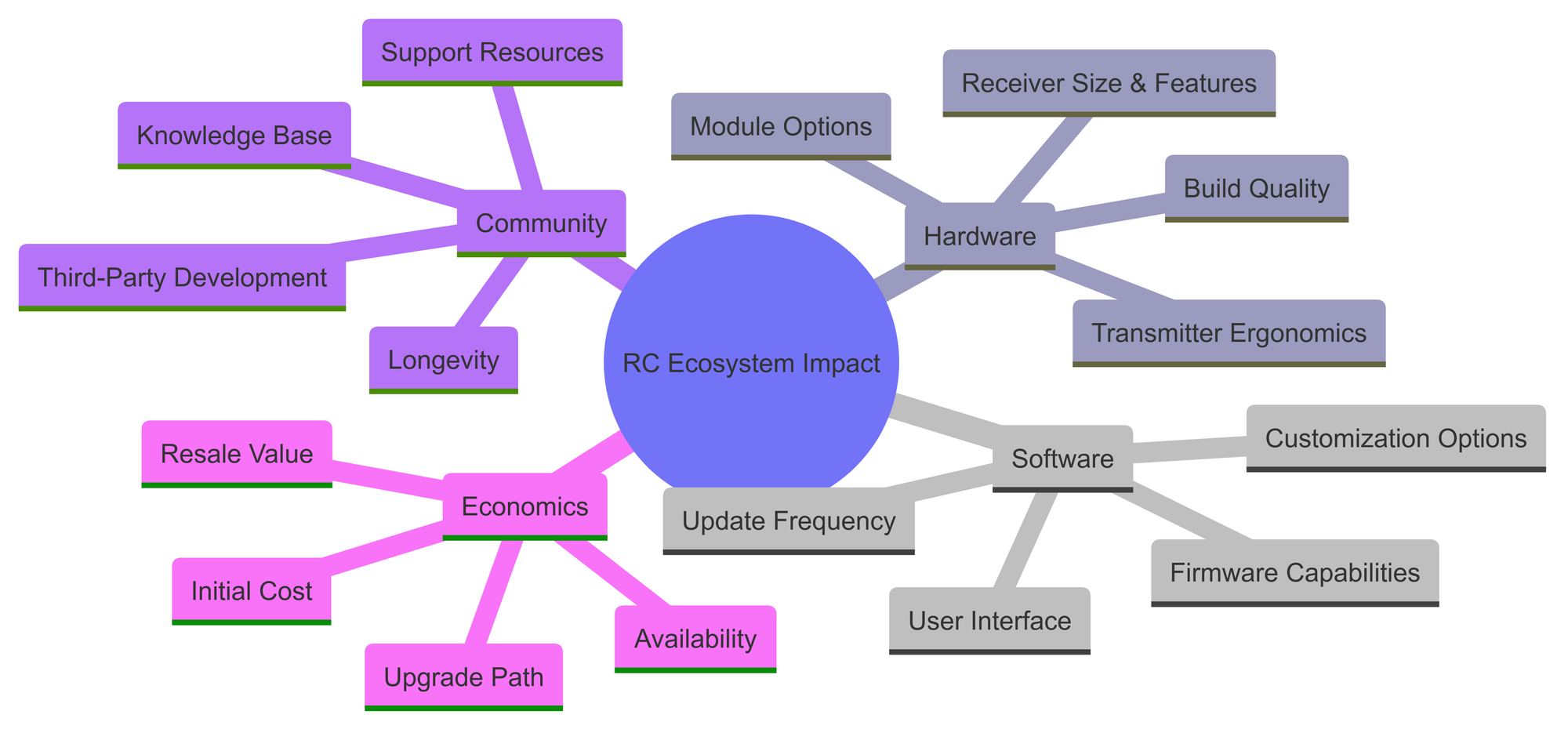
- Hardware Quality: How well-built and durable your equipment is
- Ergonomics: How comfortable the transmitter feels during long flying sessions
- Software Features: What capabilities and customization options are available
- Upgrade Path: How easily you can expand or improve your system over time
- Community Support: How much help and third-party development exists
- Cost of Ownership: Initial and ongoing costs for receivers and accessories
I've experienced firsthand how switching ecosystems can transform a pilot's experience. When I moved from my FrSky system to ExpressLRS, I not only gained performance benefits but also joined a vibrant community that continually improves the ecosystem through open-source development.
Major RC Ecosystems
Let's examine the most significant RC ecosystems in the drone world, based on my extensive testing and real-world experience.
FrSky
FrSky revolutionized the RC market by offering affordable systems with open-source firmware, breaking the stranglehold of traditional manufacturers.
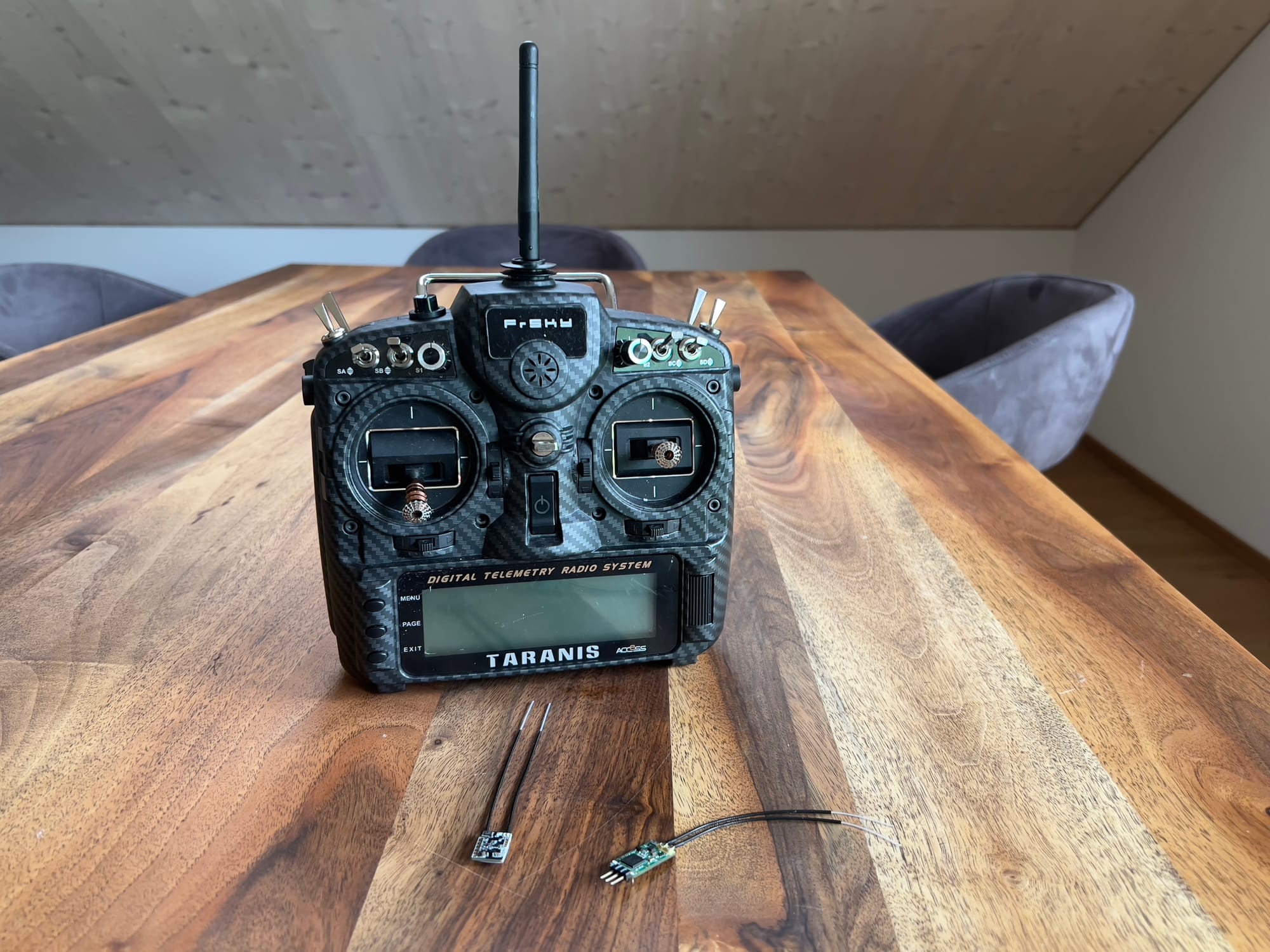
Key Products
Transmitters:
- Taranis X9D Plus - The gold standard for many years
- Taranis QX7 - More affordable option with similar features
- Taranis X-Lite - Compact, game-controller style
- Horus X10/X12 - Premium models with color screens
- Tandem X20 - Newer model with built-in RF modules
Receivers:
- XM+ - Compact, no telemetry, good for smaller builds
- R-XSR - Small with full telemetry
- X4R-SB - Larger but reliable
- R9 Series - Long-range 900MHz options
RF Protocols:
- ACCST D16 - Standard 2.4GHz protocol
- ACCESS - Newer protocol with enhanced security
- R9 - 900MHz long-range protocol
Strengths
- Value for Money: Excellent performance-to-price ratio
- OpenTX/EdgeTX Support: Powerful open-source firmware
- Extensive Ecosystem: Wide range of receivers for different applications
- Community Support: Large user base with extensive documentation
Limitations
- Firmware Confusion: EU/FCC versions and ACCESS/ACCST complications
- Quality Control: Some inconsistency in manufacturing
- Company Decisions: Some controversial firmware changes have frustrated users
- Declining Market Position: Being challenged by newer systems
I've used FrSky equipment for years, and while they've lost some ground to newer competitors, their systems remain solid choices, particularly for pilots who value the mature OpenTX/EdgeTX ecosystem. My Taranis X9D Plus has survived countless field trips and still performs reliably after five years of heavy use.
TBS (Team BlackSheep)
Team BlackSheep has established itself as a premium brand in the FPV world, particularly known for their long-range control systems.
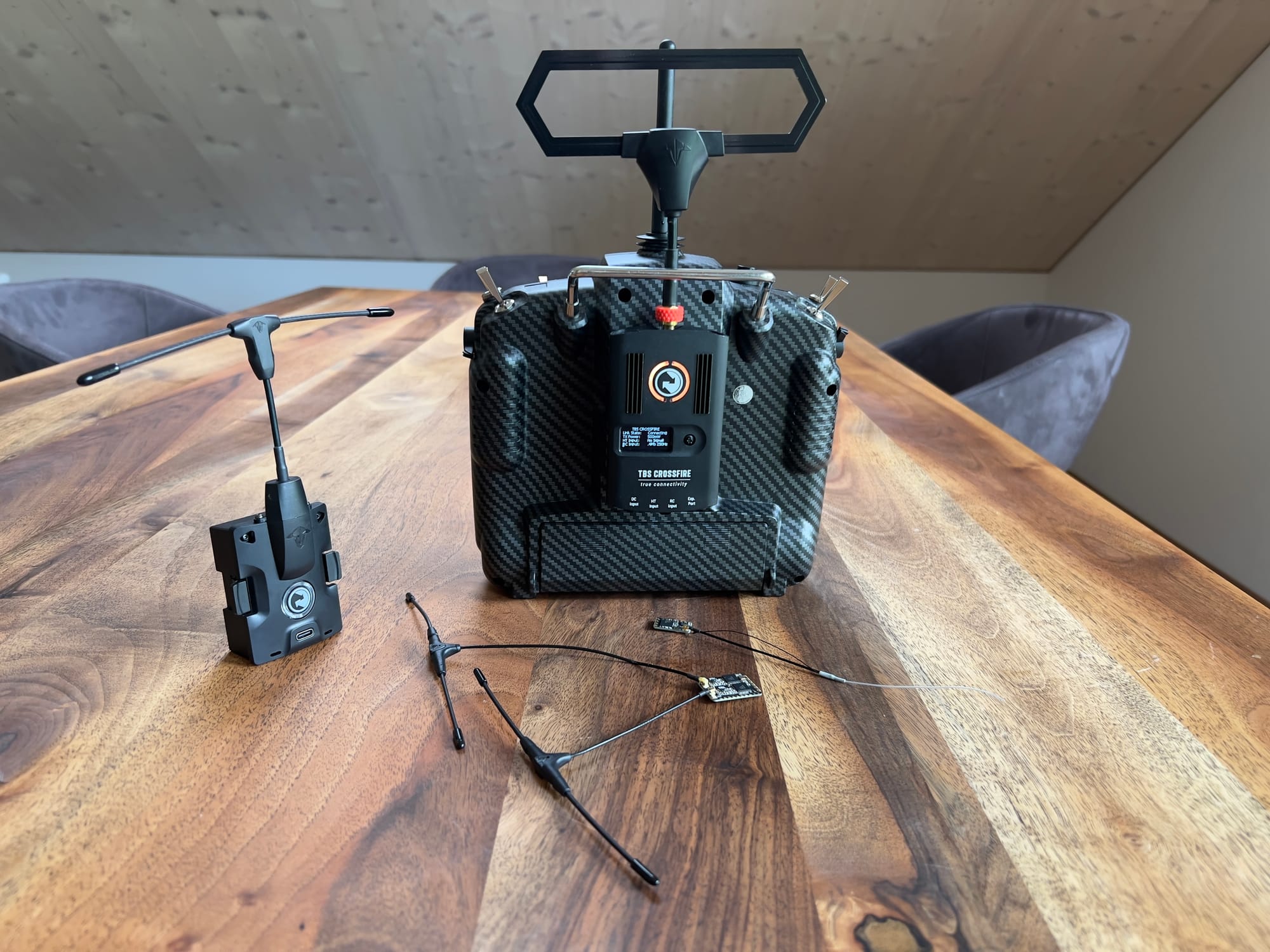
Key Products
Transmitters:
- Tango 2 - Compact, integrated Crossfire transmitter
- Mambo - Entry-level Crossfire transmitter
- Ethix Transmitters - Collaboration models with popular pilots
External Modules:
- Crossfire Micro TX - Long-range 900MHz module
- Crossfire Nano TX - Compact version
- Tracer Micro TX - 2.4GHz low-latency module
Receivers:
- Crossfire Nano - Compact receiver for typical builds
- Crossfire Micro - Larger with more connection options
- Crossfire Diversity Nano - Dual antenna version
- Tracer Nano - 2.4GHz low-latency receiver
RF Protocols:
- Crossfire - 900MHz long-range protocol
- Tracer - 2.4GHz low-latency protocol
Strengths
- Build Quality: Exceptional hardware durability
- Performance: Industry-leading range and reliability
- Support: Excellent customer service and firmware updates
- Integration: Seamless ecosystem with other TBS products
- Professional Focus: Features aimed at serious pilots
Limitations
- Cost: Premium pricing across the product line
- Closed Ecosystem: Proprietary aspects limit third-party development
- Complexity: Steeper learning curve for beginners
- Size/Weight: Some components larger than competitors
TBS products have been my go-to choice for long-range missions where reliability is paramount. I've flown my Crossfire system in challenging environments from mountain ranges to urban areas, and it's never let me down. The build quality is immediately apparent when you handle their equipment—everything feels solid and purposeful.
ExpressLRS
ExpressLRS (ELRS) is an open-source RC link that has rapidly gained popularity due to its performance and value.
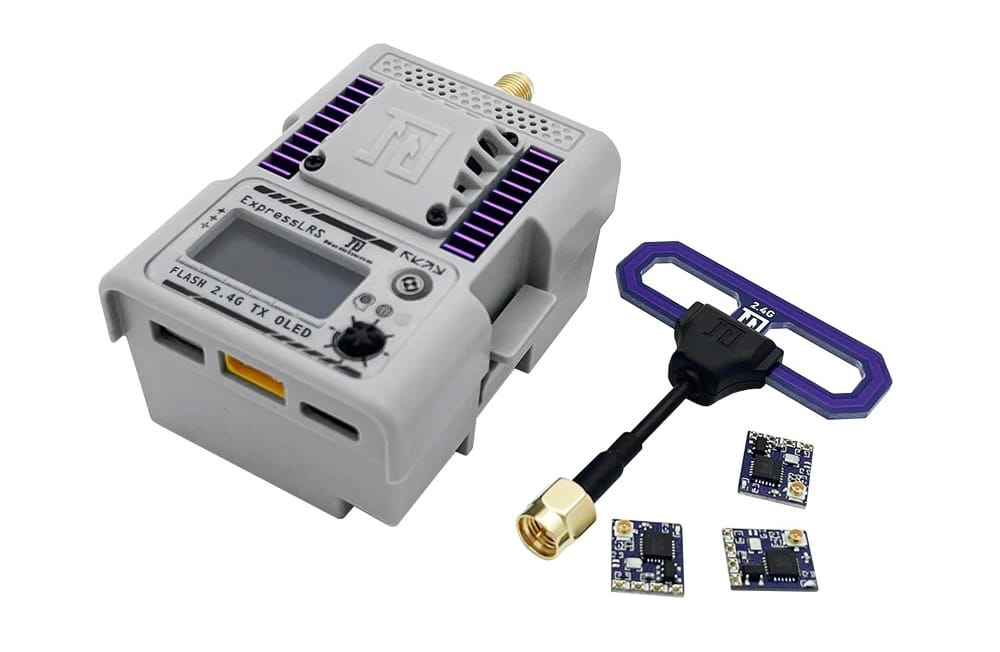
Key Products
Transmitter Modules:
- Happymodel ES24TX Pro - Early popular module
- RadioMaster Ranger - Well-built module with good features
- BetaFPV Micro TX - Compact and powerful
- Namimno Flash - Premium option with excellent build quality
Receivers:
- Happymodel EP1/EP2 - Early popular receivers
- RadioMaster RP1/RP2 - Well-built, reliable options
- BetaFPV SuperD - True diversity receiver
- Matek ELRS-R24 - Diversity receiver with good build quality
RF Protocols:
- ExpressLRS 2.4GHz - High-performance protocol with exceptional latency
- ExpressLRS 900MHz - Long-range variant with excellent penetration
Strengths
- Open Source: Community-driven development with rapid innovation
- Performance: Best-in-class latency and range
- Value: Exceptional performance-to-price ratio
- Hardware Options: Available from multiple manufacturers at different price points
- Customization: Highly configurable to suit different flying styles
Limitations
- Setup Complexity: More technical knowledge required for optimal setup
- Hardware Variability: Quality can vary between manufacturers
- Documentation: Sometimes lags behind rapid development
- Support: Relies primarily on community rather than centralized support
ExpressLRS has been a revelation in my flying experience. I converted most of my fleet to ELRS in 2025 and have been continually impressed by the performance improvements with each firmware update. The ability to choose from multiple hardware manufacturers while maintaining protocol compatibility gives me flexibility I never had with proprietary systems.
RadioMaster
A relatively new player that has quickly established itself with high-quality transmitters supporting multiple protocols.

Key Products
Transmitters:
- TX16S - Full-size premium transmitter with Hall sensor gimbals
- TX12 - Compact mid-range option
- Zorro - Compact game-controller style
- Boxer - Budget-friendly option
External Modules:
- Ranger - ExpressLRS module
- ELRS Slim - Compact ExpressLRS module
Receivers:
- RP1/RP2 - ExpressLRS receivers
- Multi-protocol receivers - Compatible with various systems
RF Protocols:
- Multi-protocol - Support for numerous protocols via internal or external modules
- ExpressLRS - Many models have built-in ELRS
Strengths
- Versatility: Multi-protocol support provides excellent flexibility
- Build Quality: Good construction at competitive prices
- OpenTX/EdgeTX Support: Full compatibility with open-source firmware
- Value: Excellent features-to-price ratio
- Innovation: Rapid product development and improvement
Limitations
- Newer Brand: Less established track record
- Internal RF Limitations: Built-in multi-protocol sometimes less performant than external modules
- Software Updates: Occasional firmware issues with new releases
- Support: Still developing comprehensive support infrastructure
I tried RadioMaster TX16S in 2023 after years with FrSky, and the improvement in build quality was immediately noticeable. The Hall sensor gimbals provide a precision that transformed my flying experience, particularly for cinematic work. The multi-protocol capability means I can control all my existing receivers while transitioning to newer systems.
FlySky
FlySky offers budget-friendly options that have gained popularity as entry-level systems.

Key Products
Transmitters:
- FS-i6X - Popular entry-level 10-channel transmitter
- FS-i6S - Touchscreen variant
- Nirvana NV14 - Premium option with Hall sensor gimbals
- PL18 - High-end color screen model
Receivers:
- FS-iA6B - Common receiver with PWM and iBUS
- FS-A8S - Micro receiver for small builds
- FS-X6B - Compact receiver with iBUS and telemetry
RF Protocols:
- AFHDS 2A - Standard protocol with moderate range
- AFHDS 3 - Newer protocol with improved performance
Strengths
- Affordability: Lowest entry price point for complete systems
- Simplicity: Straightforward setup and operation
- Availability: Widely available globally
- iBUS Protocol: Non-inverted signal works with all flight controllers
Limitations
- Build Quality: Generally lower than more expensive options
- Performance: Limited range and features compared to premium systems
- Software: Less customizable than OpenTX/EdgeTX systems
- Upgrade Path: Limited expansion options
My first proper transmitter was a FlySky FS-i6, and it served me well as a beginner. While I quickly outgrew its capabilities, I still recommend FlySky to new pilots who want to get started without a significant investment. The simplicity of these systems makes them ideal for learning the basics before moving to more advanced options.
Spektrum
Spektrum has a strong presence in the USA and is common in ready-to-fly (RTF) models.
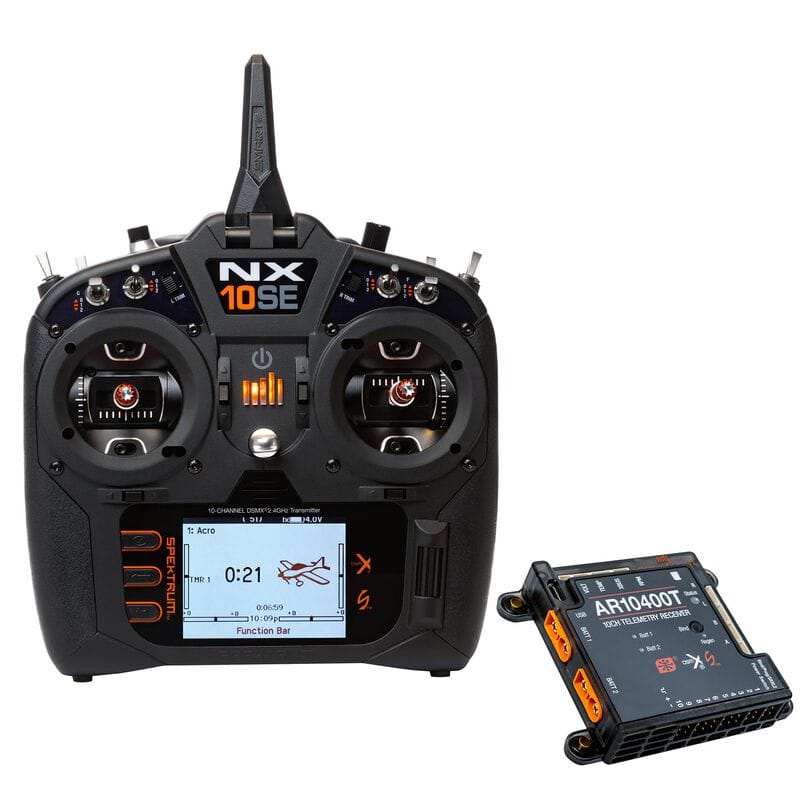
Key Products
Transmitters:
- DX6 - Entry-level 6-channel transmitter
- DX8 - Mid-range 8-channel option
- DX9 - Advanced 9-channel system
- iX12/iX20 - Premium Android-powered transmitters
Receivers:
- AR610 - Standard full-range receiver
- AR6210 - Popular sport receiver
- SPM4650 - Micro receiver for small builds
- AR8010T - Telemetry-enabled receiver
RF Protocols:
- DSM2 - Older 2.4GHz protocol
- DSMX - Current standard with improved frequency hopping
Strengths
- Reliability: Proven track record in various applications
- Integration: Excellent compatibility with Horizon Hobby products
- Simplicity: Easy binding and setup process
- Support: Strong manufacturer backing and warranty
Limitations
- Cost: Higher price point than comparable systems
- Closed Ecosystem: Proprietary system with limited third-party options
- Performance: Lower specifications than newer systems
- Customization: Limited user modification options
While I haven't used Spektrum as extensively as other systems, I've worked with several pilots who swear by them. The ecosystem is particularly strong in the USA, where Horizon Hobby's distribution network ensures good availability and support. For pilots who value simplicity and reliability over cutting-edge features, Spektrum remains a solid choice.
Futaba
Futaba is a traditional high-end Japanese brand with a long history in RC.

Key Products
Transmitters:
- T14SG - Popular mid-range option
- 16SZ - Advanced color screen model
- 18SZ - Premium professional transmitter
- T6K - Entry-level computer radio
Receivers:
- R7008SB - Full-range receiver with S.Bus
- R2000SB - Compact receiver for various applications
- R3008SB - Mid-size receiver with telemetry
RF Protocols:
- FASST - Older 2.4GHz protocol
- FASSTest - Enhanced protocol with telemetry
- T-FHSS - Current standard with improved performance
Strengths
- Build Quality: Exceptional Japanese manufacturing
- Reliability: Excellent long-term durability
- Precision: High-quality gimbals and switches
- Professional Support: Strong in commercial applications
Limitations
- Cost: Highest price point among consumer systems
- Closed Ecosystem: Proprietary system with limited third-party options
- Learning Curve: Complex menu system
- Innovation Pace: Slower to adopt new technologies
Futaba equipment is less common in the FPV drone world due to its high cost, but I've had the opportunity to use their systems in other RC applications. The build quality is immediately apparent—these transmitters are built to last for decades. For professional applications where reliability trumps cost considerations, Futaba remains a top choice.
Ecosystem Performance Comparison
After extensive testing across various conditions, here's how the major RC ecosystems compare in key performance metrics.
Range Comparison
Based on my testing with standard antennas in optimal conditions:
| Ecosystem | 2.4GHz Range | 900MHz Range (if applicable) | Notes |
|---|---|---|---|
| ExpressLRS | 10-30km (2.4GHz) 30-50km (900MHz) |
30-50km | Best overall range-to-latency ratio |
| TBS Crossfire | N/A | 30-40km | Industry standard for reliability |
| TBS Tracer | 5-10km | N/A | Excellent 2.4GHz performance |
| FrSky ACCESS | 1-3km | N/A | Adequate for typical flying |
| FrSky R9 | N/A | 10-15km | Good but less reliable than newer systems |
| RadioMaster ELRS | 10-30km (2.4GHz) 30-50km (900MHz) |
30-50km | Matches ExpressLRS performance |
| FlySky AFHDS 2A | 0.5-1.5km | N/A | Limited but sufficient for line of sight |
| Spektrum DSMX | 1-2km | N/A | Adequate for most flying |
| Futaba T-FHSS | 1.5-3km | N/A | Reliable medium range |
These ranges assume optimal conditions with clear line of sight. Real-world range is affected by obstacles, interference, antenna positioning, and other factors.
Latency Comparison
Measured from stick movement to flight controller response:
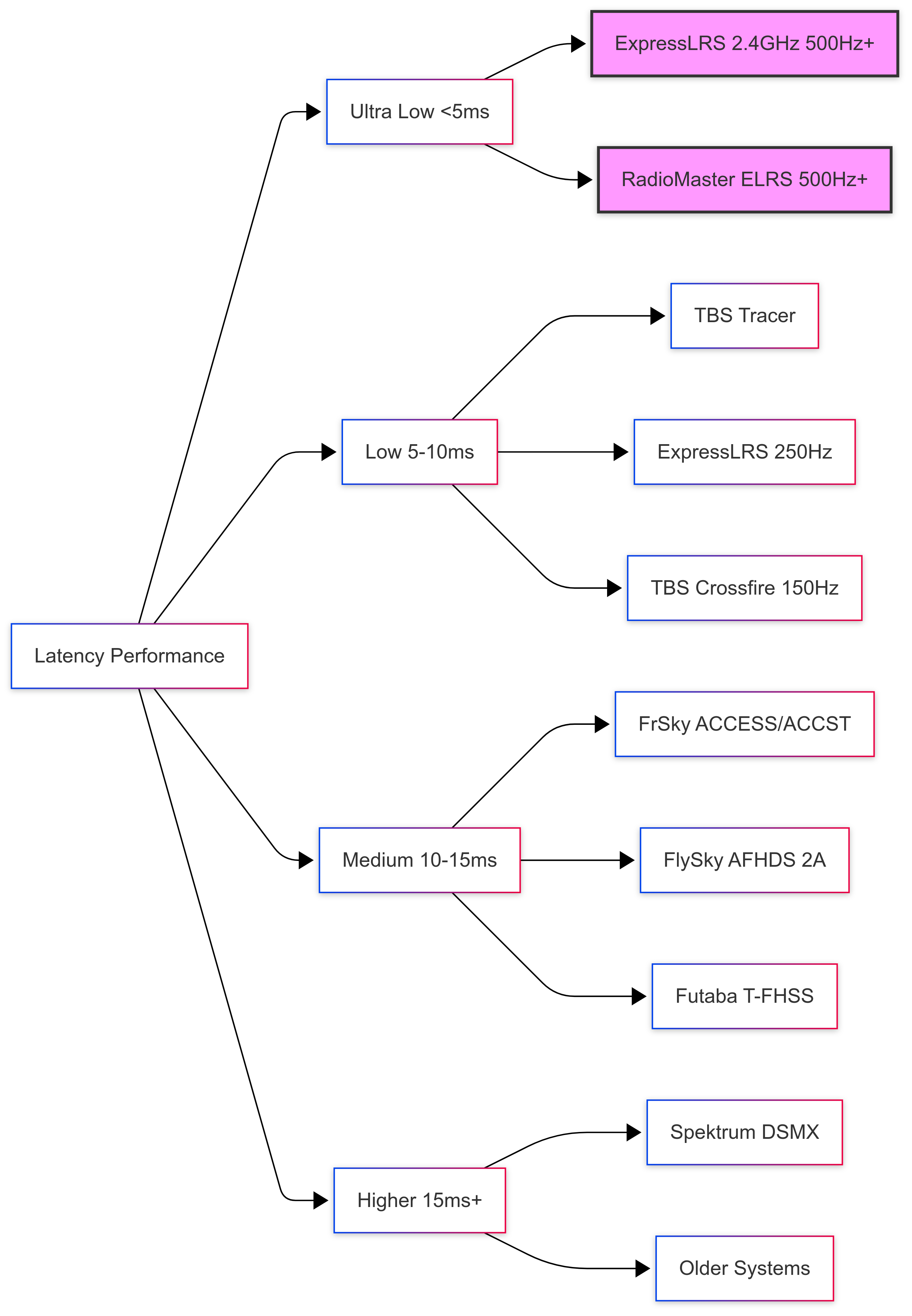
In my experience, latency differences become noticeable around 5ms. Flying ExpressLRS at 500Hz feels noticeably more responsive than traditional systems, particularly during quick maneuvers and corrections.
Value Comparison
Considering performance relative to cost:
| Ecosystem | Transmitter Cost | Receiver Cost | Performance-to-Price Ratio | Notes |
|---|---|---|---|---|
| ExpressLRS | $30-150 (module) $150-350 (complete) |
$15-30 | Excellent | Best overall value |
| RadioMaster | $70-350 | $15-30 (ELRS) | Excellent | Great value with multi-protocol |
| FlySky | $50-150 | $10-20 | Good | Best budget option |
| FrSky | $100-500 | $15-40 | Good | Declining value proposition |
| TBS | $200-350 | $30-60 | Fair | Premium pricing |
| Spektrum | $200-1000 | $30-100 | Fair | Higher cost ecosystem |
| Futaba | $300-2000 | $50-200 | Poor | Highest cost option |
ExpressLRS offers the best performance-to-price ratio I've encountered, particularly when using budget-friendly hardware options. The open-source nature of the project means you're not paying for brand premiums, just the hardware itself.
Ecosystem Comparison Table
| Feature | ExpressLRS | TBS | FrSky | RadioMaster | FlySky | Spektrum | Futaba |
|---|---|---|---|---|---|---|---|
| Open Source | Yes | No | Partial | Partial | No | No | No |
| Multi-Protocol | No | No | No | Yes | No | No | No |
| Firmware Updates | Frequent | Regular | Occasional | Regular | Rare | Occasional | Rare |
| Community Support | Excellent | Very Good | Good | Good | Fair | Fair | Limited |
| Hardware Options | Extensive | Limited | Extensive | Good | Limited | Limited | Limited |
| Customization | Extensive | Good | Very Good | Very Good | Limited | Limited | Limited |
| Beginner Friendly | Fair | Poor | Fair | Good | Excellent | Good | Poor |
| Professional Use | Good | Excellent | Good | Good | Poor | Good | Excellent |
Choosing the Right Ecosystem
With so many options, selecting the right RC ecosystem can be overwhelming. Here's my practical advice based on different pilot profiles and flying scenarios.
Decision Flowchart

For Beginners
Priority: Simplicity, reliability, and room to grow
- Best Choice: RadioMaster TX12 with built-in ExpressLRS
- Alternative: FlySky FS-i6X
- Budget Option: RTF kit with included transmitter
For beginners, I recommend the RadioMaster TX12 with built-in ExpressLRS. It offers an excellent balance of simplicity, performance, and room to grow. The EdgeTX firmware provides a shallow learning curve initially but allows for extensive customization as skills develop. The built-in ExpressLRS means you won't need to upgrade your transmitter module as your skills advance.
For Performance-Focused Pilots
Priority: Maximum performance and customization
- Best Choice: RadioMaster TX16S with ExpressLRS module
- Alternative: TBS Mambo or Tango 2
- Budget Option: RadioMaster Zorro with built-in ExpressLRS
For pilots focused on performance, ExpressLRS is the clear winner. I recommend the RadioMaster TX16S with an ExpressLRS module for the best combination of transmitter quality and link performance. The Hall sensor gimbals provide excellent precision, while ExpressLRS delivers industry-leading latency and range. The open-source nature of both EdgeTX and ExpressLRS means continuous improvements and customization options.
For Long Range Specialists
Priority: Maximum reliable range
- Best Choice: RadioMaster TX16S with ExpressLRS 900MHz module
- Alternative: TBS Tango 2 with Crossfire
- Budget Option: RadioMaster TX12 with ExpressLRS 900MHz module
For dedicated long-range flying, I recommend the RadioMaster TX16S with an ExpressLRS 900MHz module. In my testing, ExpressLRS 900MHz at 25Hz has proven to be the most reliable long-range option, with exceptional range and penetration characteristics. The TX16S provides the battery life needed for extended flying sessions, while the open-source nature of ExpressLRS means continuous range and reliability improvements.
For Racing Pilots
Priority: Minimum latency and reliability in crowded environments
- Best Choice: RadioMaster TX16S with ExpressLRS 2.4GHz module
- Alternative: TBS Tango 2 with Tracer
- Budget Option: RadioMaster Zorro with built-in ExpressLRS
For racing, minimum latency is critical. I recommend ExpressLRS at 500Hz or higher, which provides the lowest latency of any consumer system. The RadioMaster TX16S with an ExpressLRS module offers excellent gimbals for precise control, while the high packet rate ensures immediate response to stick inputs. The system's excellent rejection of interference is particularly valuable at crowded race events.
For Budget-Conscious Pilots
Priority: Maximum value for money
- Best Choice: RadioMaster Zorro with built-in ExpressLRS
- Alternative: FlySky FS-i6X
- Budget Option: Used FrSky Taranis Q X7
For pilots on a tight budget, the RadioMaster Zorro with built-in ExpressLRS offers exceptional value. You get class-leading performance at a price point that was unimaginable a few years ago. The compact form factor makes it portable, while the ExpressLRS link provides performance that exceeds much more expensive systems. For the absolute lowest entry price, a used FrSky Taranis can be found at very reasonable prices as many pilots upgrade to newer systems.
Ecosystem Maintenance and Upgrades
Keeping your RC ecosystem performing optimally requires regular maintenance and occasional upgrades.
Firmware Management
Update Strategies
- ExpressLRS:
- Check for updates monthly
- Test new releases on a backup receiver first
- Keep backup firmware files for rollback if needed
- TBS:
- Update when new features are needed
- Always update transmitter and receiver together
- Use TBS Agent for reliable flashing
- EdgeTX/OpenTX:
- Update annually unless specific features needed
- Backup all models and settings before updating
- Consider waiting a few weeks after major releases
I've learned to be cautious with firmware updates. While ExpressLRS updates often bring performance improvements, I always test new firmware on a backup receiver before updating my primary systems. This has saved me from field issues several times when new releases had unexpected bugs.
Backup Procedures
- Model Settings:
- Export models to SD card
- Keep backup copy on computer
- Document special settings
- Firmware Files:
- Save working firmware versions
- Document version numbers
- Note specific settings for each version
- Hardware Backups:
- Keep spare receiver for critical systems
- Consider backup transmitter for important events
After losing all my model settings during a failed update, I now religiously back up my transmitter settings before any firmware change. I maintain a folder on my computer with dated backups of all model configurations, making it easy to restore if something goes wrong.
Hardware Maintenance
Transmitter Care
- Gimbal Maintenance:
- Clean and re-grease annually
- Check for play or sticking
- Adjust tension to personal preference
- Replace if significant wear is detected
- Switch Maintenance:
- Test all switches regularly
- Clean with compressed air
- Apply contact cleaner for intermittent issues
- Replace worn switches when necessary
- Battery Care:
- Use quality batteries appropriate for your transmitter
- Check for swelling or damage
- Clean battery contacts
- Consider upgrading to higher capacity for long sessions
Receiver Maintenance
- Antenna Inspection:
- Check for damage or kinks
- Verify secure connections
- Replace damaged antennas immediately
- Maintain proper orientation
- Connection Verification:
- Periodically check all solder joints
- Verify secure mounting
- Check for wire fatigue
- Apply conformal coating in humid environments
- Environmental Protection:
- Consider heat-shrink or protective cases
- Apply conformal coating for outdoor use
- Keep clean and free of debris
- Protect from moisture
Upgrading Strategies
When to Upgrade
- Performance Limitations: When current system can't meet your needs
- Feature Requirements: When new capabilities are needed
- Reliability Issues: When experiencing consistent problems
- Ecosystem Expansion: When adding new types of aircraft
I've found that upgrading is most worthwhile when it addresses a specific limitation you're experiencing. For example, I upgraded from FrSky to ExpressLRS when I started experiencing range limitations during long-range flights. The improvement was immediately noticeable and justified the cost.
Cost-Effective Upgrade Paths
- Module-Based Upgrades:
- Add external RF module to existing transmitter
- Upgrade receivers while keeping transmitter
- Add multiprotocol module for flexibility
- Partial System Upgrades:
- Upgrade critical receivers first
- Keep compatible backup equipment
- Sell unused equipment to offset costs
- Cross-Ecosystem Transitions:
- Use multiprotocol transmitters during transition
- Convert one aircraft at a time
- Maintain backward compatibility where possible
When I transitioned from FrSky to ExpressLRS, I did it gradually by first adding an ExpressLRS module to my existing Taranis transmitter. This allowed me to convert one drone at a time while maintaining compatibility with my existing fleet. The gradual approach made the transition much more manageable.
Pro Tips for RC Ecosystem Management
After years of using various RC systems, I've developed some strategies that have saved me time, money, and frustration.
Ecosystem Organization
- Model Naming Conventions:
- Include protocol in model name
- Use consistent naming scheme
- Group similar models in folders
- Document special settings
- Equipment Tracking:
- Maintain inventory of receivers and modules
- Label everything with date of purchase
- Track firmware versions
- Document binding information
- Backup Management:
- Regular transmitter backups
- Document receiver settings
- Store firmware files
- Keep recovery instructions
I maintain a spreadsheet that tracks all my RC equipment, including purchase dates, firmware versions, and special settings. This has been invaluable when troubleshooting issues or when returning to a drone I haven't flown in months.
Multi-Ecosystem Strategies
- Standardization Where Possible:
- Use same switch layout across transmitters
- Standardize channel mapping
- Consistent failsafe behavior
- Similar model organization
- Transition Planning:
- Plan ecosystem migrations carefully
- Convert highest-priority aircraft first
- Maintain backward compatibility
- Budget for complete conversion
- Equipment Reuse:
- Repurpose old transmitters as backups
- Convert unused receivers for new projects
- Use old equipment for beginners
- Sell or trade unwanted gear
When I added a RadioMaster TX16S to my collection, I carefully matched the switch layout and channel assignments to my existing Taranis. This made switching between transmitters nearly seamless and reduced the risk of confusion during flights.
Field Kit Essentials
- Multi-System Preparation:
- Bring appropriate transmitter for each aircraft
- Carry spare receivers for each ecosystem
- Include binding tools if needed
- Have firmware update capability
- Backup Equipment:
- Secondary transmitter when possible
- Pre-bound spare receivers
- Repair tools specific to your systems
- Spare antennas
- Documentation:
- Binding procedures for each system
- Frequency settings for legal compliance
- Troubleshooting guides
- Recovery procedures
My field kit includes a small binder with printed binding procedures and troubleshooting guides for each RC system I use. This has saved me numerous times when issues arise away from home and internet access.
FAQ: Common Questions About RC Ecosystems
General Questions
Which RC ecosystem is best for beginners?
For absolute beginners, FlySky offers the most affordable entry point with simple setup. For beginners willing to invest a bit more, RadioMaster with built-in ExpressLRS provides an excellent balance of simplicity and room to grow.
Is it worth upgrading from FrSky to ExpressLRS?
For most pilots, yes. ExpressLRS offers better performance in almost every metric (range, latency, reliability) at a similar or lower price point. The main trade-off is slightly more complex setup, but the performance benefits are substantial.
Can I use multiple ecosystems with one transmitter?
Yes, with the right equipment. Transmitters with JR module bays (like most RadioMaster and FrSky models) can use external RF modules for different systems. Multiprotocol modules can support multiple ecosystems from a single module.
How important is transmitter ergonomics?
Extremely important for regular flying. The feel of gimbals, switch placement, and overall weight balance significantly impact your flying experience. If possible, try different transmitters before purchasing, as preferences vary widely.
Technical Questions
What's the difference between internal and external RF modules?
Internal modules are built into the transmitter, while external modules connect to the JR module bay. External modules typically offer better performance and easier upgrades but add bulk. Internal modules are more compact but limit flexibility.
Can I mix receivers from different ecosystems on the same model?
Generally not recommended. While technically possible in some cases (e.g., separate control and telemetry receivers), it adds complexity and potential points of failure without significant benefits.
How do I know when it's time to replace a receiver?
Consider replacement if you experience: consistent range issues not resolved by troubleshooting, physical damage to antennas that can't be repaired, erratic behavior, or when upgrading to a significantly better ecosystem.
Are more expensive transmitters worth the cost?
It depends on your needs. Higher-end transmitters typically offer better gimbals, more switches, and improved build quality. For casual flying, mid-range options offer the best value. For competitive flying or professional use, premium transmitters can be worth the investment.
Ecosystem-Specific Questions
Why is ExpressLRS gaining so much popularity?
ExpressLRS combines best-in-class performance (range and latency) with open-source development and affordable hardware. The community-driven approach means rapid innovation and improvements, while the open nature allows multiple manufacturers to produce compatible hardware.
Is TBS Crossfire still relevant with ExpressLRS available?
Yes, for certain users. TBS offers excellent build quality, comprehensive support, and a mature ecosystem. For professional applications where support and reliability are paramount, TBS remains a strong choice despite the higher cost.
What happened with FrSky's market position?
FrSky dominated the market for years with their Taranis series, but controversial decisions regarding firmware updates, the confusing transition from ACCST to ACCESS, and the rise of competitors like ExpressLRS and RadioMaster have eroded their position. They still make quality products but no longer hold the clear market leadership they once did.
Are RadioMaster transmitters compatible with FrSky receivers?
Yes, most RadioMaster transmitters include a multi-protocol module that supports FrSky protocols (both ACCST and ACCESS). This makes them excellent options for pilots transitioning between ecosystems.
Conclusion
The RC ecosystem you choose forms the foundation of your drone flying experience. While protocols determine the technical performance characteristics, the ecosystem shapes how you interact with your aircraft and how your equipment evolves over time.
After years of experience across multiple systems, I've found that the ideal approach is to:
- Choose based on your specific needs rather than marketing or popularity
- Invest in quality transmitters that can grow with you through module support
- Standardize where possible to reduce complexity and confusion
- Stay informed about developments in this rapidly evolving field
For most pilots in 2025, a combination of RadioMaster transmitters with ExpressLRS provides the best balance of performance, value, and future-proofing. However, each ecosystem has its strengths, and your specific requirements may lead you to a different conclusion.
The good news is that modern RC systems are more capable, reliable, and affordable than ever before. Whichever ecosystem you choose, you'll benefit from decades of technological evolution that have transformed radio control from a limiting factor into an enabler of incredible drone capabilities.



Comments ()